Managing the range
The range needs active management all year round to ensure normal behaviour and good health in the hens. Regularly topping the grass on the range in the summer reduces the risk of crop impaction and helps to kill parasitic worms on the soil. Areas around the popholes are notoriously hard to manage especially in poor weather, but excessive poaching, can discourage the hens from ranging, is a disease risk, and impacts on the quality of the litter inside the house. There are however ways to manage this area to improve drainage and avoid puddles. See how other producers have effectively managed the pophole area >>>
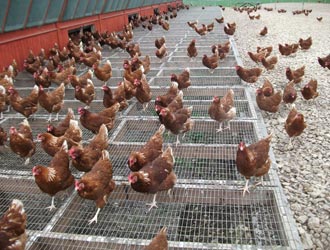 |
|
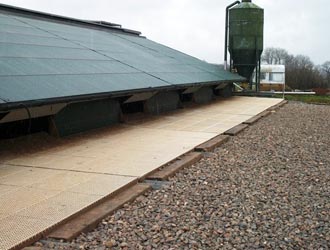 |
|
Old slats can be used around the popholes to prevent the area from becoming poached. This will also help to prevent the hens bringing wet mud into the litter area, keeping the litter dry. Think of it as a large doormat for the hens to wipe their feet on.
|
Stone placed around the popholes will wipe the hen’s feet and help to stop them bring wet mud into the house. This again will help to keep the litter inside the shed dry and prevent dirty eggs. The stone needs to be topped up or replaced regularly between flocks to prevent muck and disease building up.
|
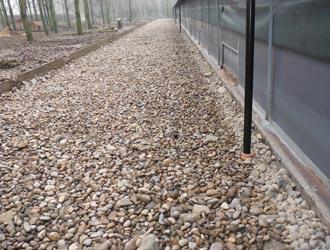 |
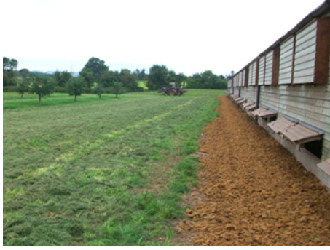 |
|
If the stone is deep enough, it will aid drainage around the popholes, preventing puddles from forming and the rain will wash the muck through. Also make sure that any gutters lead away from the house.
|
The eggs of parasitic worms are sensitive to UV radiation and so by keeping the grass short on the range you increase the chance that the eggs will be exposed to UV radiation from the sun. This can help reduce the risk of the hens picking up viable eggs from the range.
|
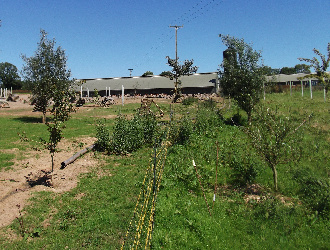 |
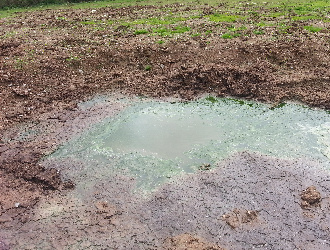 |
|
Pasture rotation is a good method to control for parasites on the range and will prevent areas from becoming too poached. By rotating pastures throughout the laying period you can allow areas of the range to recover some vegetation before moving the hens back to that area.
|
Fencing off puddles or areas that are heavily poached is a good idea. Try to fill in large, deep puddles as they are a source of disease.
|